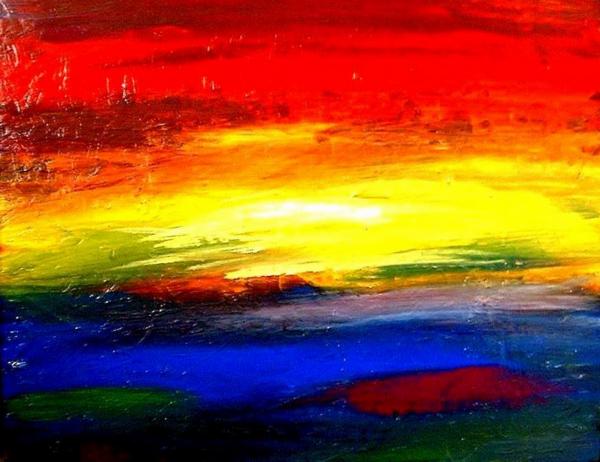This entry feels overall so poetic. The imagery plays with colors -- "such a play of colors and lights" -- and other art-related ideas ("faint-tinged", use of "lines", "landscape", "sapphire and gold", "dark green", "gray", "dull hues", "emerald", and "light yellow"; it's like, in addition to the scenes of nature, there's a blending of colors that contribute a whole new sense of self for each scenery, while still holding true to their beauty. Whitman creates his out masterpiece-of-a picture of nature of remarkable beauty with the simple features of details that hardly have the "purple prose" terms of fancy elitist writers. The appreciation of the world around him can be found through the actual experience of watching the sun set and from being among trees and other greens of nature -- any time, even for "another day" -- it will always be there as long as one goes out for oneself.
In regards to colors, it seems as if most of the color words fit more along the lines of "dark" and "dull" colors. They may refer to the darkness that comes from after sunset; thus the lastly mentioned "light yellow" would then serve as a ending with the sun returning (either for the new day or "after rain). Of course, this cycle will repeat itself, much like how, in the evolutions of "Song of Myself" and "A Song of Occupations" include changes and returns of older ideas with the new -- or colors, if you will.

No comments:
Post a Comment